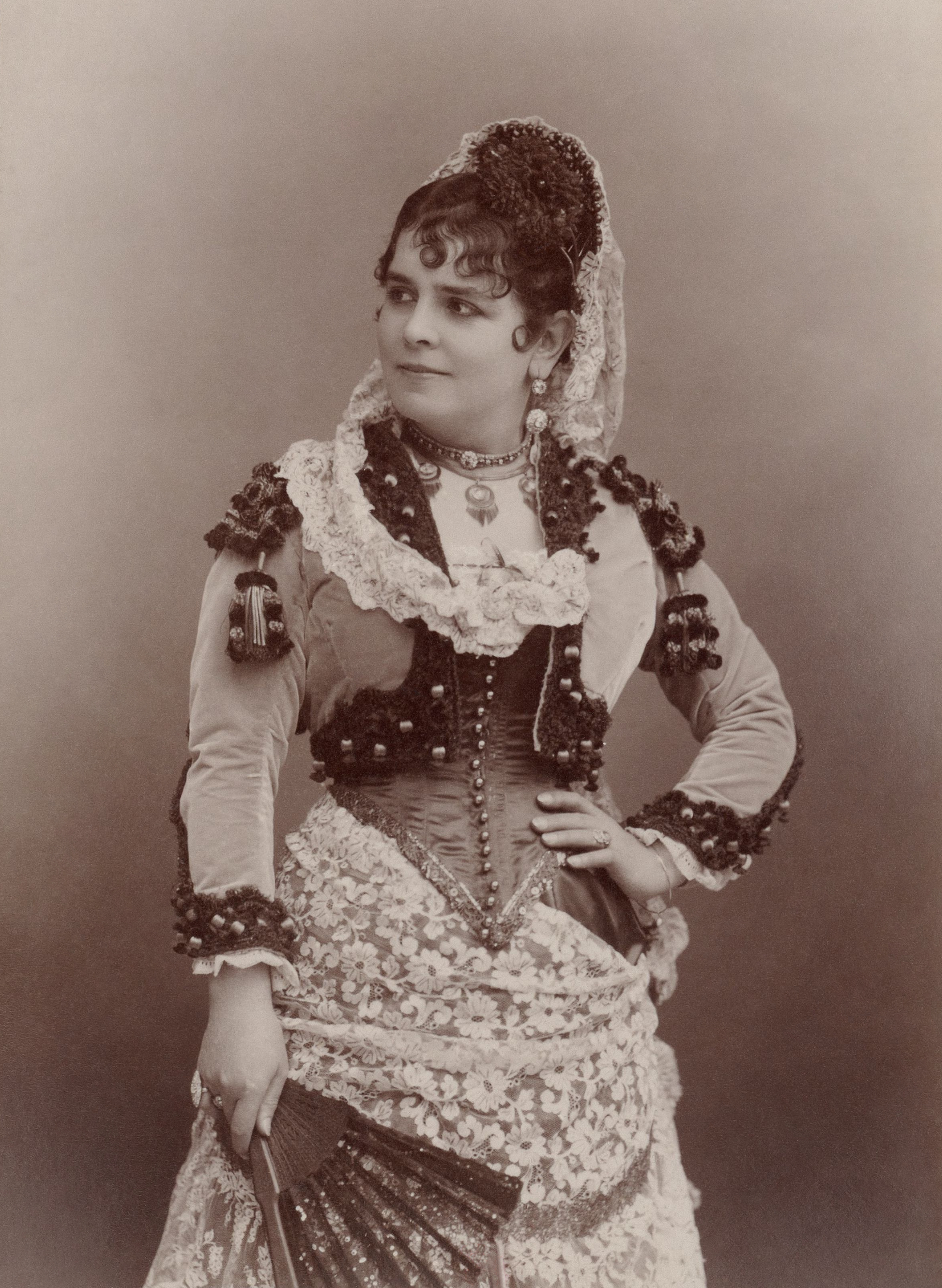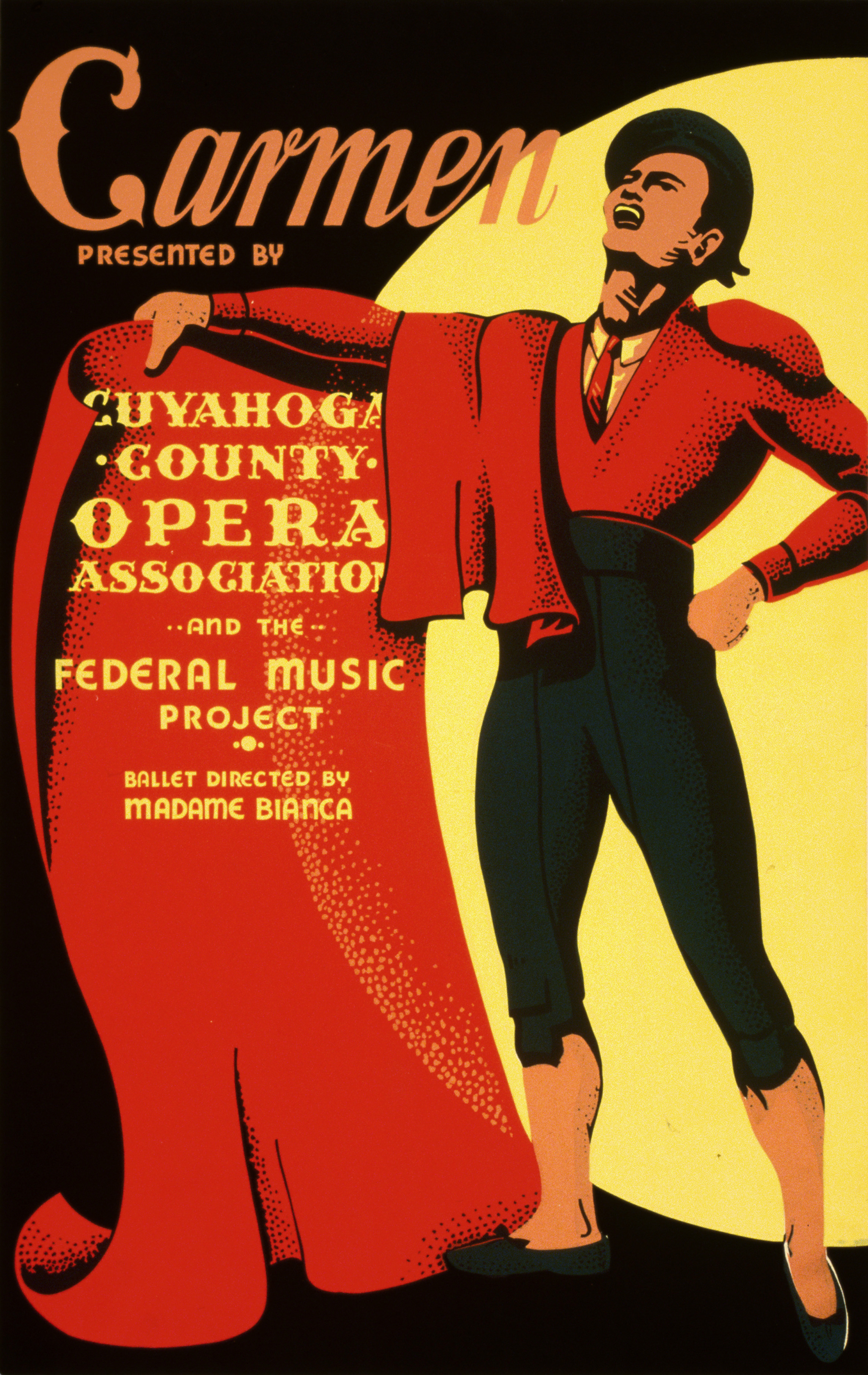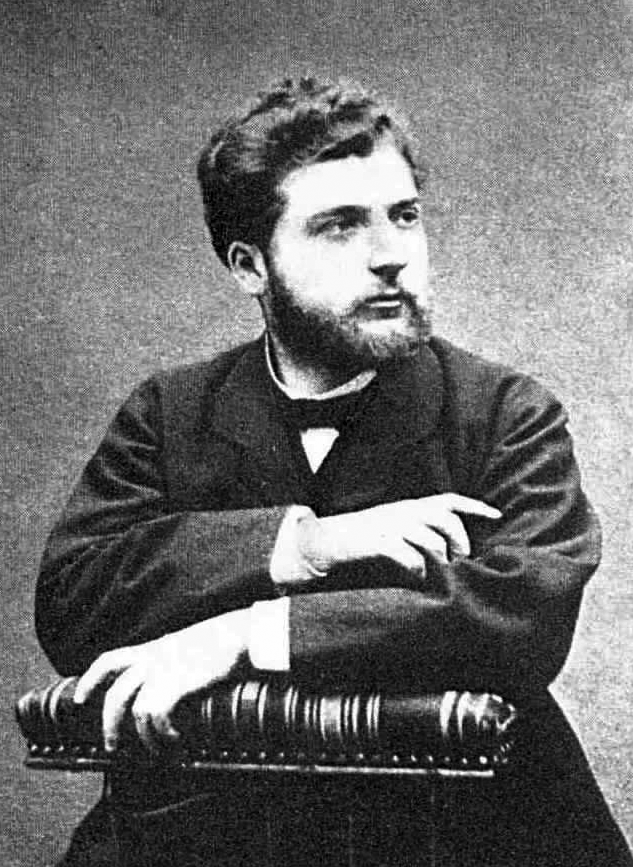|
Carmen
''Carmen'' () is an opera in four acts by the French composer Georges Bizet. The libretto was written by Henri Meilhac and Ludovic Halévy, based on the novella of the same title by Prosper Mérimée. The opera was first performed by the Opéra-Comique in Paris on 3 March 1875, where its breaking of conventions shocked and scandalised its first audiences. Bizet died suddenly after the 33rd performance, unaware that the work would achieve international acclaim within the following ten years. ''Carmen'' has since become one of the most popular and frequently performed operas in the classical canon; the " Habanera" from act 1 and the "Toreador Song" from act 2 are among the best known of all operatic arias. The opera is written in the genre of ''opéra comique'' with musical numbers separated by dialogue. It is set in southern Spain and tells the story of the downfall of Don José, a naïve soldier who is seduced by the wiles of the fiery gypsy Carmen. José abandons his childho ... [...More Info...] [...Related Items...] OR: [Wikipedia] [Google] [Baidu] |
Carmen (novella)
''Carmen'' is a novella by Prosper Mérimée, written and first published in 1845. It has been adapted into a number of dramatic works, including the famous opera of the same name by Georges Bizet. Sources According to a letter Mérimée wrote to the Countess of Montijo, ''Carmen'' was inspired by a story she told him on his visit to Spain in 1830. He said, "It was about that ruffian from Málaga who had killed his mistress, who consecrated herself exclusively to the public. ... As I have been studying the Gypsies for some time, I have made my heroine a Gypsy." An important source for the material on the Romani people (Gypsies, Gitanos) was George Borrow's book '' The Zincali'' (1841). Another source may have been the narrative poem '' The Gypsies'' (1824) by Alexander Pushkin, which Mérimée would later translate into French prose. Plot summary The novella comprises four parts. Only the first three appeared in the original publication in the October 1, 1845, issue of the '' ... [...More Info...] [...Related Items...] OR: [Wikipedia] [Google] [Baidu] |
Georges Bizet
Georges Bizet (; 25 October 18383 June 1875) was a French composer of the Romantic era. Best known for his operas in a career cut short by his early death, Bizet achieved few successes before his final work, '' Carmen'', which has become one of the most popular and frequently performed works in the entire opera repertoire. During a brilliant student career at the Conservatoire de Paris, Bizet won many prizes, including the prestigious Prix de Rome in 1857. He was recognised as an outstanding pianist, though he chose not to capitalise on this skill and rarely performed in public. Returning to Paris after almost three years in Italy, he found that the main Parisian opera theatres preferred the established classical repertoire to the works of newcomers. His keyboard and orchestral compositions were likewise largely ignored; as a result, his career stalled, and he earned his living mainly by arranging and transcribing the music of others. Restless for success, he began many ... [...More Info...] [...Related Items...] OR: [Wikipedia] [Google] [Baidu] |
Prosper Mérimée
Prosper Mérimée (; 28 September 1803 – 23 September 1870) was a French writer in the movement of Romanticism, and one of the pioneers of the novella, a short novel or long short story. He was also a noted archaeologist and historian, and an important figure in the history of architectural preservation. He is best known for his novella ''Carmen'', which became the basis of Bizet's opera ''Carmen''. He learned Russian, a language for which he had great affection, and translated the work of several important Russian writers, including Pushkin and Gogol, into French. From 1830 until 1860 he was the inspector of French historical monuments, and was responsible for the protection of many historic sites, including the medieval citadel of Carcassonne and the restoration of the façade of the cathedral of Notre-Dame de Paris. Along with the writer George Sand, he discovered the series of tapestries called ''The Lady and the Unicorn'', and arranged for their preservation. He was inst ... [...More Info...] [...Related Items...] OR: [Wikipedia] [Google] [Baidu] |
Habanera (aria)
Habanera (" usic or danceof Havana") is the popular name for "" (; "Love is a rebellious bird"), an aria from Georges Bizet's 1875 opéra comique ''Carmen''. It is the entrance aria of the title character, a mezzo-soprano role, in scene 5 of the first act. Background The score of the aria was adapted from the habanera "El Arreglito ou la Promesse de mariage", by the Spanish musician Sebastián Iradier, first published in 1863, which Bizet thought to be a folk song. When others told him he had used something written by a composer who had died ten years earlier,'' Grove's Dictionary of Music and Musicians'', 5th ed. 1954 he added a note about its derivation in the first edition of the vocal score which he himself prepared. Although the French libretto of the complete opéra comique was written by Henri Meilhac and Ludovic Halévy, the words of the habanera originated from Bizet. The Habanera was first performed by Galli-Marié at the Opéra-Comique on 3 March 1875. Bizet, h ... [...More Info...] [...Related Items...] OR: [Wikipedia] [Google] [Baidu] |
Toreador Song
The Toreador Song is the popular name for the aria "" ("I toast you"), from the French opera ''Carmen'', composed by Georges Bizet to a libretto by Henri Meilhac and Ludovic Halévy. It is sung by the bullfighter (French: '' toréador'') Escamillo as he enters in act 2 and describes various situations in the bullring, the cheering of the crowds and the fame that comes with victory. The refrain, "", forms the middle part of the prelude to act 1 of ''Carmen''. Music The bass-baritone couplet has a vocal range from B2 to F4 and a tessitura from C3 to E4. Its time signature is common time (4/4), its key is F minor with the refrain in F major. The tempo indication is ''allegro molto moderato'', =108. The orchestra introduces the first melodic section, which is jaunty and flashy. Like Carmen's Habanera, it is built on a descending chromatic scale as Escamillo describes his experiences in the bullfighting ring. In the chorus praising the toreador, the music turns celebratory ... [...More Info...] [...Related Items...] OR: [Wikipedia] [Google] [Baidu] |
Romani People
The Romani (also spelled Romany or Rromani , ), colloquially known as the Roma, are an Indo-Aryan ethnic group, traditionally nomadic itinerants. They live in Europe and Anatolia, and have diaspora populations located worldwide, with significant concentrations in the Americas. In the English language, the Romani people are widely known by the exonym Gypsies (or Gipsies), which is considered pejorative by many Romani people due to its connotations of illegality and irregularity as well as its historical use as a racial slur. For versions (some of which are cognates) of the word in many other languages (e.g., , , it, zingaro, , and ) this perception is either very small or non-existent. At the first World Romani Congress in 1971, its attendees unanimously voted to reject the use of all exonyms for the Romani people, including ''Gypsy'', due to their aforementioned negative and stereotypical connotations. Linguistic and genetic evidence suggests that the Roma origina ... [...More Info...] [...Related Items...] OR: [Wikipedia] [Google] [Baidu] |
Les Pêcheurs De Perles
' (''The Pearl Fishers'') is an opera in three acts by the French composer Georges Bizet, to a libretto by Eugène Cormon and Michel Carré. It was premiered on 30 September 1863 at the Théâtre Lyrique in Paris, and was given 18 performances in its initial run. Set in ancient times on the island of Ceylon (Sri Lanka), the opera tells the story of how two men's vow of eternal friendship is threatened by their love for the same woman, whose own dilemma is the conflict between secular love and her sacred oath as a priestess. The friendship duet "", generally known as "The Pearl Fishers Duet", is one of the best-known in Western opera. At the time of the premiere, Bizet (born on 25 October 1838) was not yet 25 years old: he had yet to establish himself in the Parisian musical world. The commission to write ' arose from his standing as a former winner of the prestigious Prix de Rome. Despite a good reception by the public, press reactions to the work were generally hostile and dis ... [...More Info...] [...Related Items...] OR: [Wikipedia] [Google] [Baidu] |
Henri Meilhac
Henri Meilhac (23 February 1830 – 6 July 1897) was a French dramatist and opera librettist, best known for his collaborations with Ludovic Halévy on Georges Bizet's ''Carmen'' and on the works of Jacques Offenbach, as well as Jules Massenet's '' Manon''. Biography Meilhac was born in the 1st arrondissement of Paris in 1830. As a young man, he began writing fanciful articles for Parisian newspapers and comédies en vaudevilles, in a vivacious boulevardier spirit which brought him to the forefront. About 1860, Meilhac met Ludovic Halévy, and their collaboration for the stage lasted twenty years. Their most famous collaboration is the libretto for Georges Bizet's ''Carmen''. However, Meilhac's work is most closely tied to the music of Jacques Offenbach, for whom he wrote over a dozen librettos, most of them together with Halévy. The most successful collaborations with Offenbach are '' La belle Hélène'' (1864), '' Barbe-bleue'' (1866), '' La Vie parisienne'' (1866), '' L ... [...More Info...] [...Related Items...] OR: [Wikipedia] [Google] [Baidu] |
Opéra-Comique
The Opéra-Comique is a Paris opera company which was founded around 1714 by some of the popular theatres of the Parisian fairs. In 1762 the company was merged with – and for a time took the name of – its chief rival, the Comédie-Italienne at the Hôtel de Bourgogne. It was also called the Théâtre-Italien up to about 1793, when it again became most commonly known as the Opéra-Comique. Today the company's official name is Théâtre national de l'Opéra-Comique, and its theatre, with a capacity of around 1,248 seats, sometimes referred to as the Salle Favart (the third on this site), is located at Place Boïeldieu in the 2nd arrondissement of Paris, not far from the Palais Garnier, one of the theatres of the Paris Opéra. The musicians and others associated with the Opéra-Comique have made important contributions to operatic history and tradition in France and to French opera. Its current mission is to reconnect with its history and discover its unique repertoire to e ... [...More Info...] [...Related Items...] OR: [Wikipedia] [Google] [Baidu] |
Opéra Comique
''Opéra comique'' (; plural: ''opéras comiques'') is a genre of French opera that contains spoken dialogue and arias. It emerged from the popular '' opéras comiques en vaudevilles'' of the Fair Theatres of St Germain and St Laurent (and to a lesser extent the Comédie-Italienne), M. Elizabeth C. Bartlet and Richard Langham Smith"Opéra comique" '' Grove Music Online''. Oxford Music Online. 19 November 2009 which combined existing popular tunes with spoken sections. Associated with the Paris theatre of the same name, ''opéra comique'' is not necessarily comical or shallow in nature; '' Carmen'', perhaps the most famous ''opéra comique'', is a tragedy. Use of the term The term ''opéra comique'' is complex in meaning and cannot simply be translated as "comic opera". The genre originated in the early 18th century with humorous and satirical plays performed at the theatres of the Paris fairs which contained songs ('' vaudevilles''), with new words set to already existing musi ... [...More Info...] [...Related Items...] OR: [Wikipedia] [Google] [Baidu] |
Adolphe De Leuven
Adolphe de Leuven (30 September 1802 – 14 April 1884) was a French theatre director and a librettist. Also known as Grenvallet, and Count Adolph Ribbing. He was the illegitimate son of Adolph Ribbing, who was involved in the assassination of Gustav III of Sweden in 1792, and Jeanne-Claude Billard. He took his name as a variation of that of his paternal grandmother, Eva Löwen. He produced over 170 plays and librettos, with operatic settings by Adam including ''Le postillon de Lonjumeau'', Clapisson, Félicien David (''Le Saphir'') and Thomas.Wright L A"Leuven, Adolphe de"in ''The New Grove Dictionary of Opera'', four volumes, edited by Stanley Sadie. London & New York, Macmillan, 1997. He was associated with the Opéra-Comique for fifty years and was director (with Eugène Ritt as administrator) from 1862 to 1870 and co-director with Camille du Locle from 1870-1874. He resigned in protest at the on-stage murder in ''Carmen ''Carmen'' () is an opera in four acts by the Fre ... [...More Info...] [...Related Items...] OR: [Wikipedia] [Google] [Baidu] |
Ludovic Halévy
Ludovic Halévy (1 January 1834 – 7 May 1908) was a French author and playwright, best known for his collaborations with Henri Meilhac on Georges Bizet's ''Carmen'' and on the works of Jacques Offenbach. Biography Ludovic Halévy was born in Paris. His father, Léon Halévy (1802–1883), was a civil servant and a clever and versatile writer, who tried almost every branch of literature—prose and verse, vaudeville, drama, history—without, however, achieving decisive success in any. His uncle, Fromental Halévy, was a noted composer of opera; hence the double and early connection of Ludovic Halévy with the Parisian stage. His father had converted from Judaism to Christianity prior to his marriage with Alexandrine Lebas, daughter of a Christian architect. At the age of six, Halévy might have been seen playing in that ''Foyer de la danse'' with which he was to make his readers so familiar, and, when a boy of twelve, he would often, on a Sunday night, on his way back to t ... [...More Info...] [...Related Items...] OR: [Wikipedia] [Google] [Baidu] |









